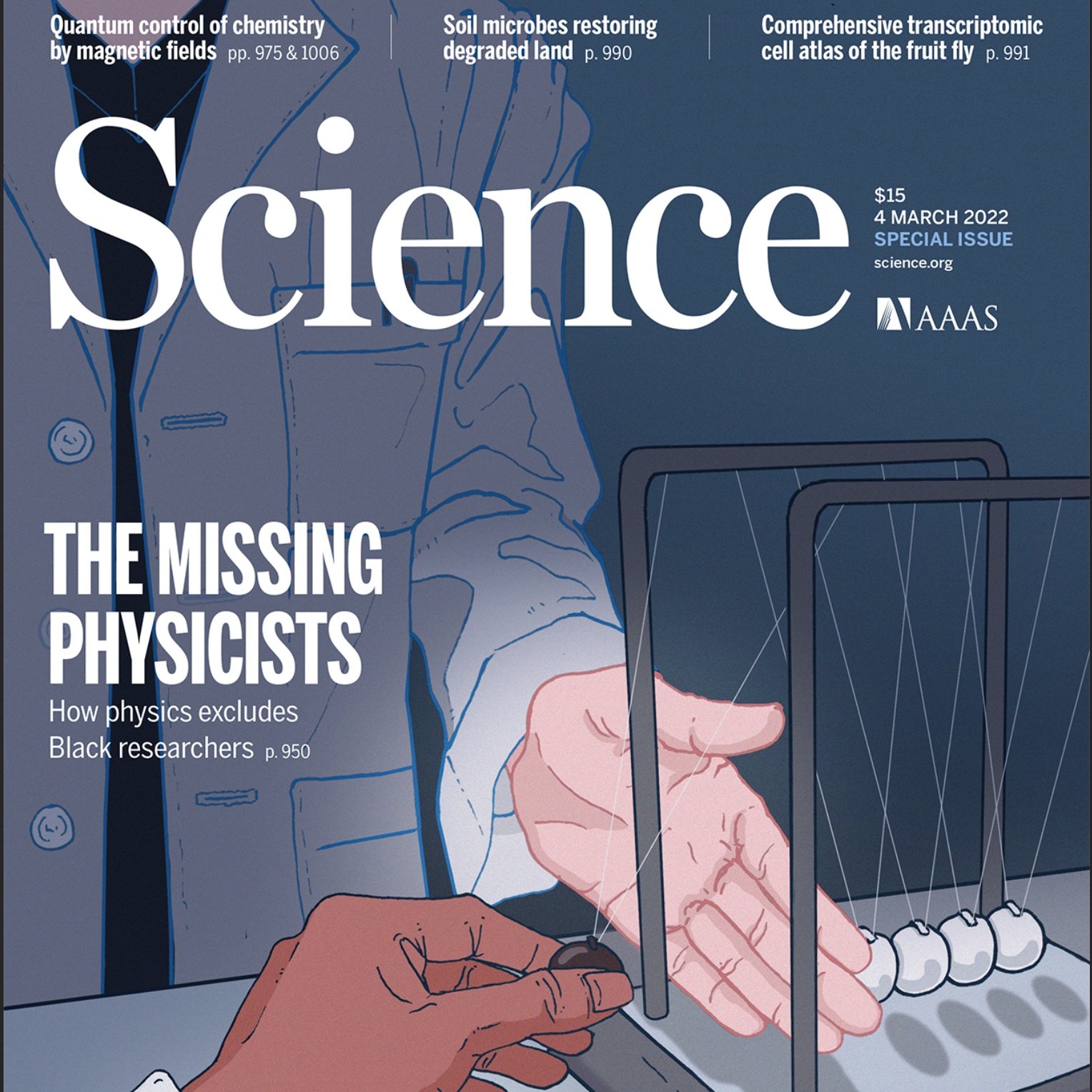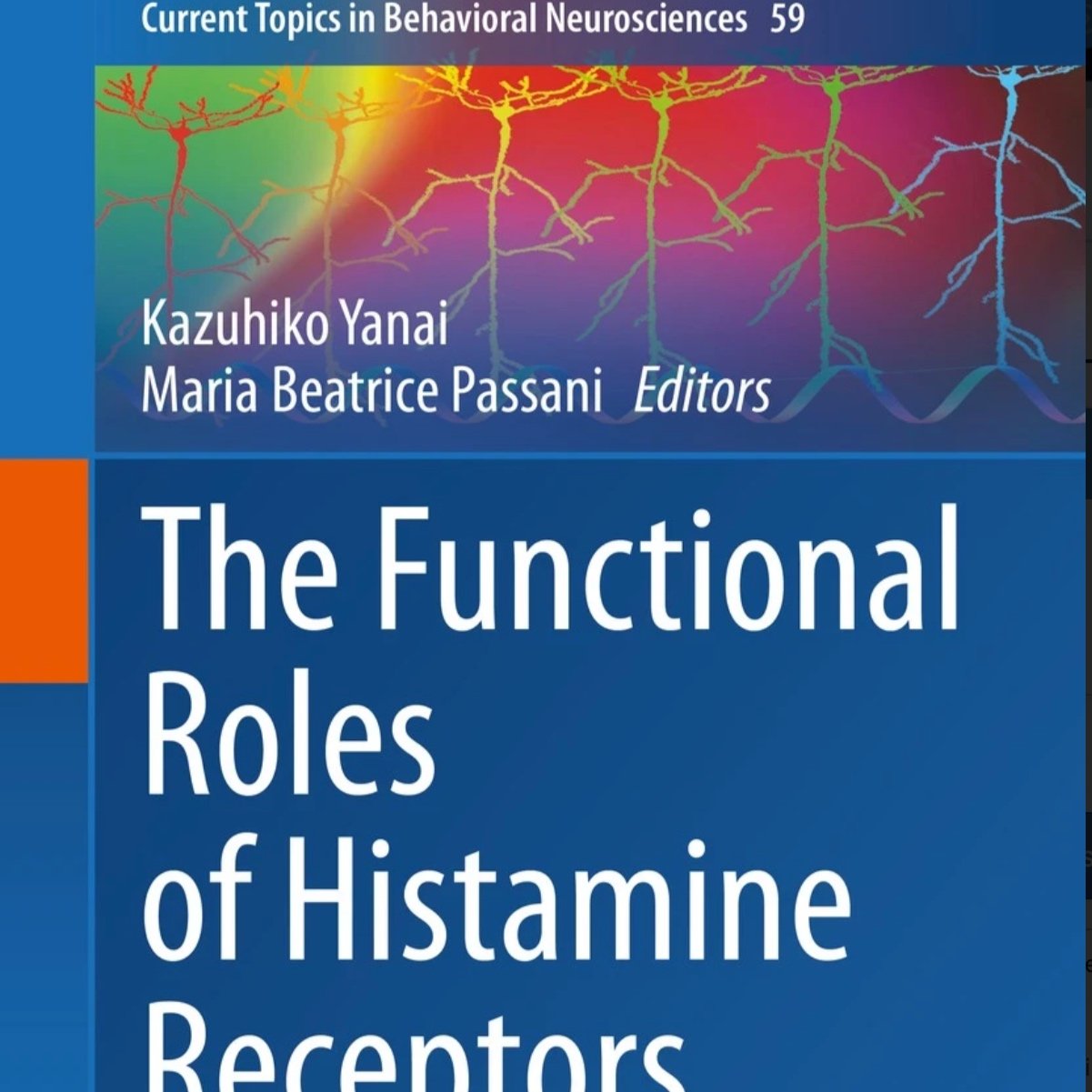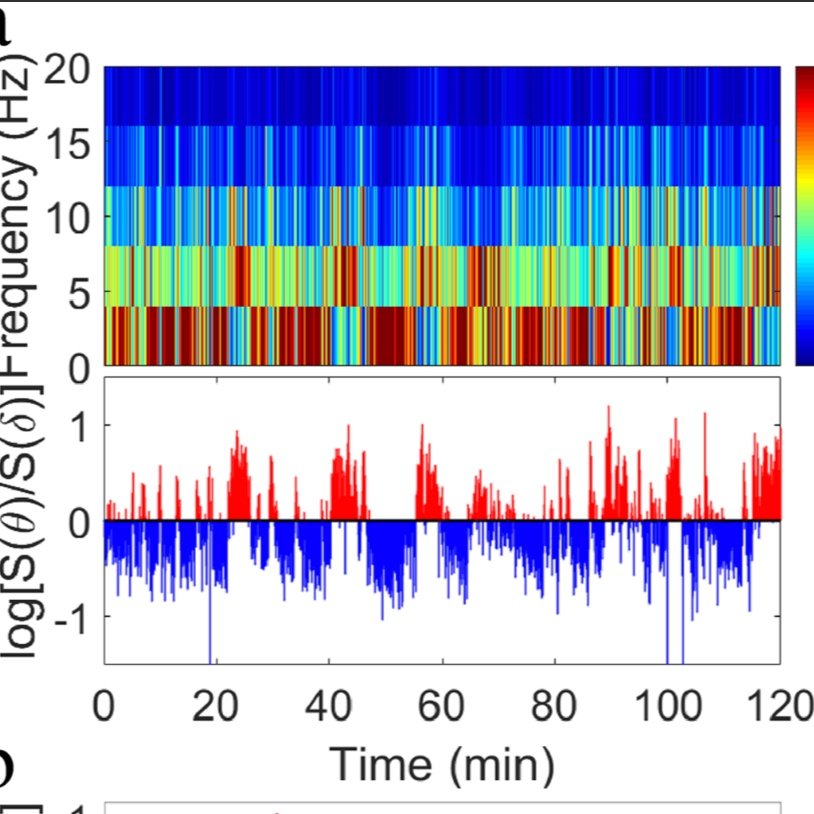Publications

Beyond the symptom: the biology of fatigue
A workshop titled “Beyond the Symptom: The Biology of Fatigue” was held virtually September 27–28, 2021. It was jointly organized by the Sleep Research Society and the Neurobiology of Fatigue Working Group of the NIH Blueprint Neuroscience Research Program. For access to the presentations and video recordings, see: https://neuroscienceblueprint.nih.gov/about/event/beyond-symptom-biology-fatigue. The goals of this workshop were to bring together clinicians and scientists who use a variety of research approaches to understand fatigue in multiple conditions and to identify key gaps in our understanding of the biology of fatigue. This workshop summary distills key issues discussed in this workshop and provides a list of promising directions for future research on this topic. We do not attempt to provide a comprehensive review of the state of our understanding of fatigue, nor to provide a comprehensive reprise of the many excellent presentations. Rather, our goal is to highlight key advances and to focus on questions and future approaches to answering them.

Addicted to dreaming
How human brains regulate sleep remains an enduring puzzle (1). How sleep subserves human dreaming—rapid eye movement (REM) sleep—is especially puzzling. There is considerable mechanistic understanding of the synaptic, cellular, and circuit bases of REM sleep (2, 3). However, despite pharmacological evidence that dopamine (DA) can potently modulate REM sleep, this neurotransmitter is conspicuously absent from most prevailing REM sleep circuit models.

Lateral septum modulates cortical state to tune responsivity to threat stimuli
Sudden unexpected environmental changes capture attention and, when perceived as potentially dangerous, evoke defensive behavioral states. Perturbations of the lateral septum (LS) can produce extreme hyperdefensiveness even to innocuous stimuli, but how this structure influences stimulus-evoked defensive responses and threat perception remains unclear. Here, we show that Crhr2-expressing neurons in mouse LS exhibit phasic activation upon detection of threatening but not rewarding stimuli. Threat-stimulus-driven activity predicts the probability but not vigor or type of defensive behavior evoked. Although necessary for and sufficient to potentiate stimulus-triggered defensive responses, LSCrhr2 neurons do not promote specific behaviors. Rather, their stimulation elicits negative valence and physiological arousal. Moreover, LSCrhr2 activity tracks brain state fluctuations and drives cortical activation and rapid awakening in the absence of threat. Together, our findings suggest that LS directs bottom-up modulation of cortical function to evoke preparatory defensive internal states and selectively enhance responsivity to threat-related stimuli.

Validation of DREADD agonists and administration route in a murine model of sleep enhancement
Chemogenetics is a powerful tool to study the role of specific neuronal populations in physiology and diseases. Of particular interest, in mice, acute and specific activation of parafacial zone (PZ) GABAergic neurons expressing the Designer Receptors Activated by Designer Drugs (DREADD) hM3Dq (PZGABA-hM3Dq) enhances slow-wave-sleep (SWS), and this effect lasts for up to 6 h, allowing prolonged and detailed study of SWS. However, the most widely used DREADDs ligand, clozapine N-oxide (CNO), is metabolized into clozapine which has the potential of inducing non-specific effects. In addition, CNO is usually injected intraperitoneally (IP) in mice, limiting the number and frequency of repeated administration.

Elevated TNF-α Leads to Neural Circuit Instability in the Absence of Interferon Regulatory Factor 8
Interferon regulatory factor 8 (IRF8) is a transcription factor necessary for the maturation of microglia, as well as other peripheral immune cells. It also regulates the transition of microglia and other immune cells to a pro-inflammatory phenotype. Irf8 is also a known risk gene for multiple sclerosis and lupus, and it has recently been shown to be downregulated in schizophrenia. While most studies have focused on IRF8-dependent regulation of immune cell function, little is known about how it impacts neural circuits. Here, we show by RNAseq from Irf8−/− male and female mouse brains that several genes involved in regulation of neural activity are dysregulated. We then show that these molecular changes are reflected in heightened neural excitability and a profound increase in susceptibility to lethal seizures in male and female Irf8−/− mice. Finally, we identify that TNF-α is elevated specifically in microglia in the CNS, and genetic or acute pharmacological blockade of TNF-α in the Irf8−/− CNS rescued the seizure phenotype. These results provide important insights into the consequences of IRF8 signaling and TNF-α on neural circuits. Our data further suggest that neuronal function is impacted by loss of IRF8, a factor involved in neuropsychiatric and neurodegenerative diseases.

Orexin neurons inhibit sleep to promote arousal
Humans and animals lacking orexin neurons exhibit daytime sleepiness, sleep attacks, and state instability. While the circuit basis by which orexin neurons contribute to consolidated wakefulness remains unclear, existing models posit that orexin neurons provide their wake-stabilizing influence by exerting excitatory tone on other brain arousal nodes. Here we show using in vivo optogenetics, in vitro optogenetic-based circuit mapping, and single-cell transcriptomics that orexin neurons also contribute to arousal maintenance through indirect inhibition of sleep-promoting neurons of the ventrolateral preoptic nucleus. Activation of this subcortical circuit rapidly drives wakefulness from sleep by differentially modulating the activity of ventrolateral preoptic neurons. We further identify and characterize a feedforward circuit through which orexin (and co-released glutamate) acts to indirectly target and inhibit sleep-promoting ventrolateral preoptic neurons to produce arousal. This revealed circuitry provides an alternate framework for understanding how orexin neurons contribute to the maintenance of consolidated wakefulness and stabilize behavioral state.

Two novel mouse models of slow-wave-sleep enhancement in aging and Alzheimer’s disease
Aging and Alzheimer’s disease (AD) are both associated with reduced quantity and quality of the deepest stage of sleep, called slow-wave-sleep (SWS). Slow-wave-sleep deficits have been shown to worsen AD symptoms and prevent healthy aging. However, the mechanism remains poorly understood due to the lack of animal models in which SWS can be specifically manipulated. Notably, a mouse model of SWS enhancement has been recently developed in adult mice. As a prelude to studies assessing the impact of SWS enhancement on aging and neurodegeneration, we first asked whether SWS can be enhanced in animal models of aging and AD.
The chemogenetic receptor hM3Dq was conditionally expressed in GABAergic neurons of the parafacial zone of aged mice and AD (APP/PS1) mouse model. Sleep–wake phenotypes were analyzed in baseline condition and following clozapine-N-oxide (CNO) and vehicle injections. Both aged and AD mice display deficits in sleep quality, characterized by decreased slow wave activity. Both aged and AD mice show SWS enhancement following CNO injection, characterized by a shorter SWS latency, increased SWS amount and consolidation, and enhanced slow wave activity, compared with vehicle injection. Importantly, the SWS enhancement phenotypes in aged and APP/PS1 model mice are comparable to those seen in adult and littermate wild-type mice, respectively. These mouse models will allow investigation of the role of SWS in aging and AD, using, for the first time, gain-of SWS experiments.

The Sleep-Promoting Ventrolateral Preoptic Nucleus: What Have We Learned over the Past 25 Years?
For over a century, the role of the preoptic hypothalamus and adjacent basal forebrain in sleep–wake regulation has been recognized. However, for years, the identity and location of sleep- and wake-promoting neurons in this region remained largely unresolved. Twenty-five years ago, Saper and colleagues uncovered a small collection of sleep-active neurons in the ventrolateral preoptic nucleus (VLPO) of the preoptic hypothalamus, and since this seminal discovery the VLPO has been intensively investigated by labs around the world, including our own. Herein, we first review the history of the preoptic area, with an emphasis on the VLPO in sleep–wake control. We then attempt to synthesize our current understanding of the circuit, cellular and synaptic bases by which the VLPO both regulates and is itself regulated, in order to exert a powerful control over behavioral state, as well as examining data suggesting an involvement of the VLPO in other physiological processes.

A marked enhancement of a BLOC-1 gene, pallidin, associated with somnolent mouse models deficient in histamine transmission
Histamine and orexin (or hypocretin) neurons act distinctly and synergistically in wake control. A double knockout mouse genotype lacking both histamine and orexins shows all sleep disorders of human narcolepsy. We identified in this mouse brain a sharp upregulation of a BLOC-1 gene, pallidin, that is selectively associated with a deficient histamine neurotransmission and dramatic changes in the balance of cholinergic and aminergic systems in mice as well as an enhanced sleep in drosophila. This study demonstrates potential sleep disorders-associated compensatory mechanisms with pallidin as a novel biomarker.

The Role of the Central Histaminergic System in Behavioral State Control
Histamine is a small monoamine signaling molecule that plays a role in many peripheral and central physiological processes, including the regulation of wakefulness. The tuberomammillary nucleus is the sole neuronal source of histamine in the brain, and histamine neurons are thought to promote wakefulness and vigilance maintenance – under certain environmental and/or behavioral contexts – through their diffuse innervation of the cortex and other wake-promoting brain circuits. Histamine neurons also contain a number of other putative neurotransmitters, although the functional role of these co-transmitters remains incompletely understood. Within the brain histamine operates through three receptor subtypes that are located on pre- and post-synaptic membranes. Some histamine receptors exhibit constitutive activity, and hence exist in an activated state even in the absence of histamine. Newer medications used to reduce sleepiness in narcolepsy patients in fact enhance histamine signaling by blunting the constitutive activity of these histamine receptors. In this chapter, we provide an overview of the central histamine system with an emphasis on its role in behavioral state regulation and how drugs targeting histamine receptors are used clinically to treat a wide range of sleep-wake disorders.

Depleting hypothalamic somatostatinergic neurons recapitulates diabetic phenotypes in mouse brain, bone marrow, adipose and retina
Hypothalamic inflammation and sympathetic nervous system hyperactivity are hallmark features of the metabolic syndrome and type 2 diabetes. Hypothalamic inflammation may aggravate metabolic and immunological pathologies due to extensive sympathetic activation of peripheral tissues. Loss of somatostatinergic (SST) neurons may contribute to enhanced hypothalamic inflammation.

Carbon Monoxide: from Poison to Clinical Trials
Every cell has a highly sophisticated system for regulating heme levels, which is particularly important with regard to turnover. Heme degradation generates CO and while CO has long been viewed as a metabolic waste product, and at higher concentrations cellularly lethal, we now know that CO is an indispensable gasotransmitter that participates in fundamental physiological processes necessary for survival. Irrefutable preclinical data have resulted in concerted efforts to develop CO as a safe and effective therapeutic agent, but against this notion lies dogma that CO is a poison, especially to the brain. The emergence of this debate is discussed here highlighting the neuroprotective properties of CO through its role on the central circadian clock and ongoing strategies being developed for CO administration for clinical use.

Suprachiasmatic VIP neurons are required for normal circadian rhythmicity and comprised of molecularly distinct subpopulations
The hypothalamic suprachiasmatic (SCN) clock contains several neurochemically defined cell groups that contribute to the genesis of circadian rhythms. Using cell-specific and genetically targeted approaches we have confirmed an indispensable role for vasoactive intestinal polypeptide-expressing SCN (SCNVIP) neurons, including their molecular clock, in generating the mammalian locomotor activity (LMA) circadian rhythm. Optogenetic-assisted circuit mapping revealed functional, di-synaptic connectivity between SCNVIP neurons and dorsomedial hypothalamic neurons, providing a circuit substrate by which SCNVIP neurons may regulate LMA rhythms. In vivo photometry revealed that while SCNVIP neurons are acutely responsive to light, their activity is otherwise behavioral state invariant. Single-nuclei RNA-sequencing revealed that SCNVIP neurons comprise two transcriptionally distinct subtypes, including putative pacemaker and non-pacemaker populations. Altogether, our work establishes necessity of SCNVIP neurons for the LMA circadian rhythm, elucidates organization of circadian outflow from and modulatory input to SCNVIP cells, and demonstrates a subpopulation-level molecular heterogeneity that suggests distinct functions for specific SCNVIP subtypes.

Hypothalamic Pomc Neurons Innervate the Spinal Cord and Modulate the Excitability of Premotor Circuits
Locomotion requires energy, yet animals need to increase locomotion in order to find and consume food in energy-deprived states. While such energy homeostatic coordination suggests brain origin, whether the central melanocortin 4 receptor (Mc4r) system directly modulates locomotion through motor circuits is unknown. Here, we report that hypothalamic Pomc neurons in zebrafish and mice have long-range projections into spinal cord regions harboring Mc4r-expressing V2a interneurons, crucial components of the premotor networks. Furthermore, in zebrafish, Mc4r activation decreases the excitability of spinal V2a neurons as well as swimming and foraging, while systemic or V2a neuron-specific blockage of Mc4r promotes locomotion. In contrast, in mice, electrophysiological recordings revealed that two-thirds of V2a neurons in lamina X are excited by the Mc4r agonist α-MSH, and acute inhibition of Mc4r signaling reduces locomotor activity. In addition, we found other Mc4r neurons in spinal lamina X that are inhibited by α-MSH, which is in line with previous studies in rodents where Mc4r agonists reduced locomotor activity. Collectively, our studies identify spinal V2a interneurons as evolutionary conserved second-order neurons of the central Mc4r system, providing a direct anatomical and functional link between energy homeostasis and locomotor control systems. The net effects of this modulatory system on locomotor activity can vary between different vertebrate species and, possibly, even within one species. We discuss the biological sense of this phenomenon in light of the ambiguity of locomotion on energy balance and the different living conditions of the different species.

Study protocol for a randomised controlled trial evaluating the effects of the orexin receptor antagonist suvorexant on sleep architecture and delirium in the intensive care unit
Insomnia frequently occurs in patients admitted to an intensive care unit (ICU). Sleep-promoting agents may reduce rapid eye movement sleep and have deliriogenic effects. Suvorexant (Belsomra) is an orexin receptor antagonist with Food and Drug Administration (FDA) approval for the treatment of adult insomnia, which improves sleep onset and maintenance as well as subjective measures of quality of sleep. This trial will evaluate the efficacy of postoperative oral suvorexant treatment on night-time wakefulness after persistent sleep onset as well as the incidence and duration of delirium among adult cardiac surgical patients.

The neuroanatomy and neurochemistry of sleep-wake control
Sleep-wake control is dependent upon multiple brain areas widely distributed throughout the neural axis. Historically, the monoaminergic and cholinergic neurons of the ascending arousal system were the first to be discovered, and it was only relatively recently that GABAergic and glutamatergic wake- and sleep-promoting populations have been identified. Contemporary advances in molecular-genetic tools have revealed both the complexity and heterogeneity of GABAergic NREM sleep-promoting neurons as well as REM sleep-regulating populations in the brainstem such as glutamatergic neurons in the sublaterodorsal nucleus. The sleep-wake cycle progresses from periods of wakefulness to non-rapid eye movement (NREM) sleep and subsequently rapid eye movement (REM) sleep. Each vigilance stage is controlled by multiple neuronal populations, via a complex regulation that is still incompletely understood. In recent years the field has seen a proliferation in the identification and characterization of new neuronal populations involved in sleep-wake control thanks to newer, more powerful molecular genetic tools that are able to reveal neurophysiological functions via selective activation, inhibition and lesion of neuroanatomically defined sub-types of neurons that are widespread in the brain, such as GABAergic and glutamatergic neurons

Role of serotonergic dorsal raphe neurons in hypercapnia-induced arousals
During obstructive sleep apnea, elevation of CO2 during apneas contributes to awakening and restoring airway patency. We previously found that glutamatergic neurons in the external lateral parabrachial nucleus (PBel) containing calcitonin gene related peptide (PBelCGRP neurons) are critical for causing arousal during hypercapnia. However, others found that genetic deletion of serotonin (5HT) neurons in the brainstem also prevented arousal from hypercapnia. To examine interactions between the two systems, we showed that dorsal raphe (DR) 5HT neurons selectively targeted the PBel. Either genetically directed deletion or acute optogenetic silencing of DRSert neurons dramatically increased the latency of mice to arouse during hypercapnia, as did silencing DRSert terminals in the PBel. This effect was mediated by 5HT2a receptors which are expressed by PBelCGRP neurons. Our results indicate that the serotonergic input from the DR to the PBel via 5HT2a receptors is critical for modulating the sensitivity of the PBelCGRP neurons that cause arousal to rising levels of blood CO2.

An Inhibitory Lateral Hypothalamic-Preoptic Circuit Mediates Rapid Arousals from Sleep
Among the neuronal populations implicated in sleep-wake control, the ventrolateral preoptic (VLPO) nucleus has emerged as a key sleep-promoting center. However, the synaptic drives that regulate the VLPO to control arousal levels in vivo have not to date been identified. Here, we show that sleep-promoting galaninergic neurons within the VLPO nucleus, defined pharmacologically and by single-cell transcript analysis, are postsynaptic targets of lateral hypothalamic GABAergic (LHGABA) neurons and that activation of this pathway in vivo rapidly drives wakefulness. Ca2+ imaging from LHGABA neurons indicate that they are both wake and rapid eye movement (REM)-sleep active. Consistent with the potent arousal-promoting property of the LHGABA → VLPO pathway, presynaptic inputs to LHGABA neurons originate from several canonical stress- and arousal-related network nodes. This work represents the first demonstration that direct synaptic inhibition of the VLPO area can suppress sleep-promoting neurons to rapidly promote arousal.

Selective activation of serotoninergic dorsal raphe neurons facilitates sleep through anxiolysis
A role for the brain’s serotoninergic (5HT) system in the regulation of sleep and wakefulness has been long suggested. Yet, previous studies employing pharmacological, lesion and genetically driven approaches have produced inconsistent findings, leaving 5HT’s role in sleep-wake regulation incompletely understood. Here we sought to define the specific contribution of 5HT neurons within the dorsal raphe nucleus (DRN5HT) to sleep and arousal control. To do this, we employed a chemogenetic strategy to selectively and acutely activate DRN5HT neurons and monitored sleep-wake using electroencephalogram recordings. We additionally assessed indices of anxiety using the open field and elevated plus maze behavioral tests and employed telemetric-based recordings to test effects of acute DRN5HT activation on body temperature and locomotor activity. Our findings indicate that the DRN5HT cell population may not modulate sleep-wake per se, but rather that its activation has apparent anxiolytic properties, suggesting the more nuanced view that DRN5HT neurons are sleep permissive under circumstances that produce anxiety or stress.

Non-equilibrium critical dynamics of bursts in θ and δrhythms as fundamental characteristic of sleep and wake micro-architecture
Origin and functions of intermittent transitions among sleep stages, including short awakenings and arousals, constitute a challenge to the current homeostatic framework for sleep regulation, focusing on factors modulating sleep over large time scales. Here we propose that the complex micro-architecture characterizing the sleep-wake cycle results from an underlying non-equilibrium critical dynamics, bridging collective behaviors across spatio-temporal scales. We investigate θ and δ wave dynamics in control rats and in rats with lesions of sleep-promoting neurons in the parafacial zone. We demonstrate that intermittent bursts in θ and δ rhythms exhibit a complex temporal organization, with long-range power-law correlations and a robust duality of power law (θ-bursts, active phase) and exponential-like (δ-bursts, quiescent phase) duration distributions, typical features of non-equilibrium systems self-organizing at criticality. Crucially, such temporal organization relates to anti-correlated coupling between θ- and δ-bursts, and is independent of the dominant physiologic state and lesions, a solid indication of a basic principle in sleep dynamics.
